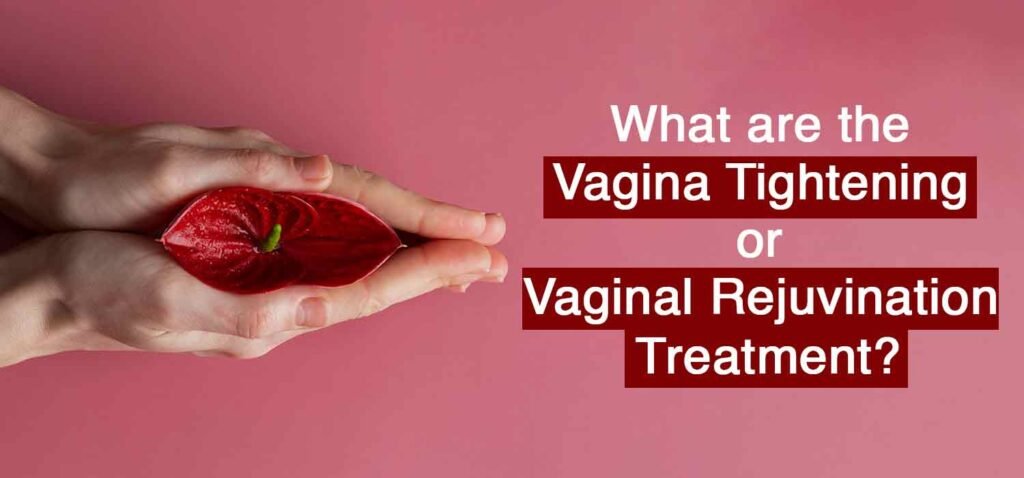Vaginal rejuvenation—whether performed using non-surgical energy-based treatments or surgical procedures—can bring life-changing benefits, including improved comfort, enhanced sexual wellness, and restored confidence. However, a key component of achieving optimal results is proper aftercare and recovery.
This guide outlines a detailed recovery timeline for both non-surgical and surgical vaginal rejuvenation treatments, along with essential tips to support healing, minimize complications, and maintain long-term results.
🔍 Two Main Types of Vaginal Rejuvenation
Before diving into recovery, it’s important to understand that your aftercare will differ depending on the type of procedure:
1. Non-Surgical Vaginal Rejuvenation
- Includes radiofrequency (RF), fractional CO₂ or Er:YAG lasers, PRP (O-Shot®), microneedling, and HIFU
- Minimally invasive, no incisions or stitches
- Often requires a series of treatments
- Little to no downtime
2. Surgical Vaginal Rejuvenation
- Includes vaginoplasty, labiaplasty, perineoplasty, and related procedures
- Involves incisions, sutures, and a longer recovery period
- One-time surgical intervention, typically under anesthesia
📅 Recovery Timeline: Non-Surgical Treatments
First 24–48 Hours
- What to expect: Mild swelling, slight redness, increased discharge, or sensitivity
- Aftercare tips:
- Avoid hot baths or swimming
- Skip tight underwear or synthetic fabrics—opt for breathable cotton
- Use a panty liner if needed for light discharge
- Refrain from sexual intercourse and tampon use
Day 3–7
- What to expect: Minor dryness or itching as tissue begins regenerating
- Aftercare tips:
- Avoid heavy exercise or biking
- Do not use any vaginal products unless prescribed (no douching or perfumed soaps)
- Keep the area clean with warm water only
Week 2–3
- What to expect: Most side effects subside; early collagen remodeling begins
- Aftercare tips:
- You may resume sexual activity (if approved by your provider)
- Continue to avoid harsh soaps or chemicals
- Stay hydrated and eat nutrient-rich foods to support healing
Week 4 and Beyond
- What to expect: Enhanced lubrication, improved tightness, or sensation may start to be noticeable
- Aftercare tips:
- Follow your treatment plan (some therapies require 3–4 sessions spaced 4–6 weeks apart)
- Maintain follow-up visits as scheduled
- Consider maintenance treatments every 12–18 months if recommended
📅 Recovery Timeline: Surgical Vaginal Rejuvenation
First 48–72 Hours
- What to expect: Swelling, bruising, soreness, and tightness around the surgical site
- Aftercare tips:
- Rest and elevate the pelvis using pillows
- Use prescribed pain relievers and antibiotics
- Apply cold compresses (not directly on skin) to reduce swelling
- No walking long distances, lifting, or straining
Week 1–2
- What to expect: Sutures begin to dissolve, tenderness reduces
- Aftercare tips:
- Keep the incision area clean and dry
- Gently pat dry after urination or bathing
- Avoid sitting for long periods; use a donut cushion if needed
- No sex, tampons, or vigorous movement
Week 3–4
- What to expect: Swelling decreases, light activities may resume
- Aftercare tips:
- Follow up with your surgeon to monitor healing
- Continue to avoid sexual activity, high-impact exercise, and swimming
- Wear loose clothing to minimize friction
Week 6–8
- What to expect: Most patients feel comfortable returning to normal activities, including intimacy
- Aftercare tips:
- You may resume sex if cleared by your surgeon
- Start light exercise with caution
- Use silicone gels or creams (if recommended) to help minimize scarring
Month 3 and Beyond
- What to expect: Full healing and final results
- Aftercare tips:
- Report any unusual symptoms such as bleeding, infection, or discomfort
- Maintain good vaginal hygiene and regular check-ups
- Scar tissue will soften over time; follow surgeon’s massage or care recommendations
💡 General Aftercare Tips for All Vaginal Rejuvenation Procedures
- Stay hydrated – Water helps flush out toxins and supports tissue healing.
- Eat healing foods – Include lean proteins, leafy greens, and vitamin C–rich fruits.
- Avoid heat and friction – Skip saunas, hot tubs, and cycling until cleared.
- Use only recommended products – No DIY treatments or over-the-counter creams unless approved.
- Listen to your body – Rest when tired and report pain or changes to your doctor.
- No smoking or alcohol – These slow the healing process and increase the risk of complications.
- Practice gentle hygiene – Avoid harsh soaps or aggressive washing.
🚨 When to Call Your Provider
Contact your doctor immediately if you experience:
- Excessive bleeding
- Signs of infection (fever, foul-smelling discharge, pus, or increased pain)
- Worsening swelling after a few days
- Difficulty urinating or unusual discomfort
- Opening of a surgical incision
✅ Final Thoughts
Vaginal rejuvenation procedures—whether surgical or non-surgical—can enhance your quality of life, but recovery plays a critical role in your results. Following your provider’s aftercare instructions closely and understanding your healing timeline will help you avoid complications and maximize the long-term benefits.
Every woman’s body heals at its own pace. Be patient, stay informed, and don’t hesitate to reach out to your provider with questions along the way.




